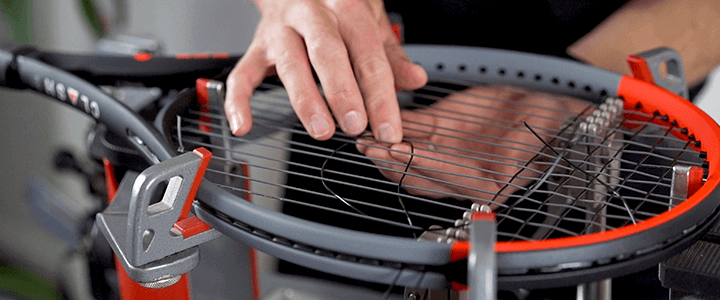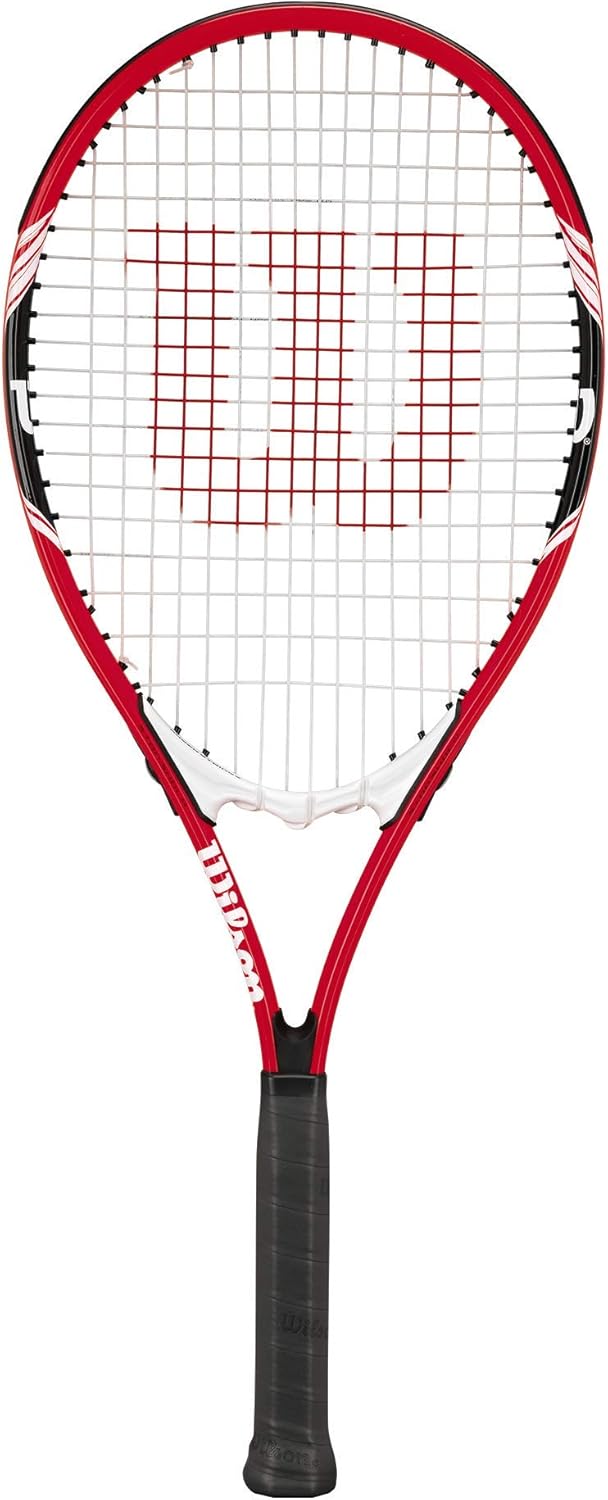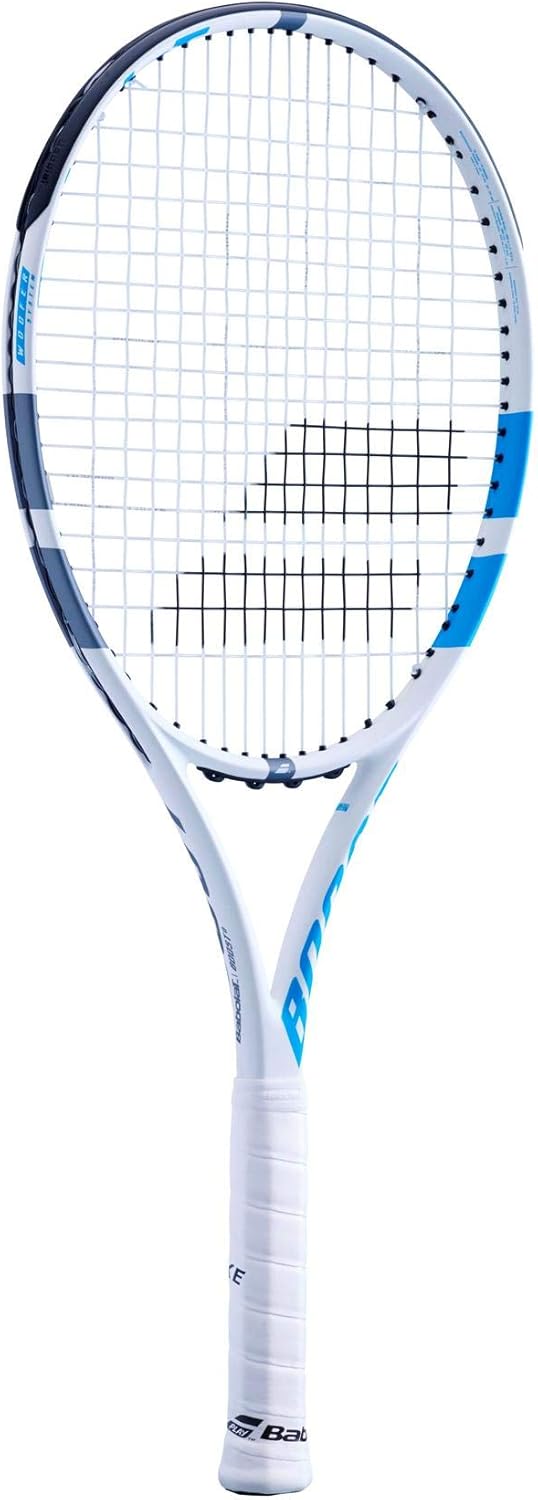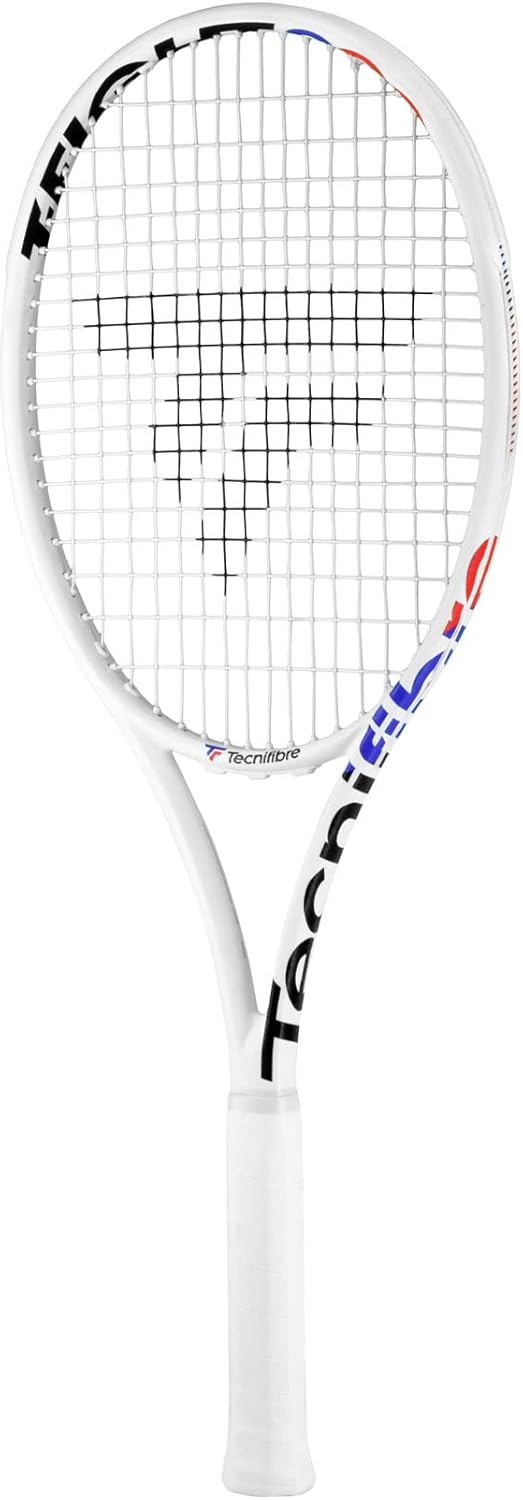Tennis rackets are essential equipment for playing tennis, consisting of a head, throat, and handle. They are used alongside tennis strings and vibration dampeners.

Tennis rackets have undergone significant evolution, transitioning from wooden frames to metal, and now to carbon fiber composites. The sport traces its origins to a handball-like game played by monastery missionaries. Early rackets were simple, with wooden frames and sheepskin surfaces. As tennis evolved, so did the materials and design of the rackets. Modern tennis rackets are primarily made from carbon fiber composites, offering a combination of lightweight durability, elasticity, and strength.
Tennis rackets are mainly divided into three categories.These are generally lighter and easier to control, suitable for beginners. They have larger racket faces and sweet spots, helping beginners hit the ball more easily.These have moderate weights and better performance, suitable for athletes with some foundation. They offer more choices in weight, balance point, and racket face size.These are heavier and have superior performance, suitable for professional athletes. Professional rackets are more refined in materials, craftsmanship, and design, meeting the high performance requirements of top-level athletes.

Tennis rackets are mainly made of aluminum alloy, carbon fiber, and graphite.Aluminum Alloy Rackets are heavier but durable, with poorer performance.Carbon Fiber Rackets are lightweight, elastic, and have excellent performance but are more expensive. Modern tennis rackets are mostly made of carbon fiber composites.Graphite Rackets are intermediate between aluminum alloy and carbon fiber, offering good value for money.
Maintenance and Care
Proper maintenance and care of a tennis racket can prolong its life and enhance performance.

1. String Maintenance
Restring Regularly: Strings lose tension over time, even if you’re not playing. For regular players, restringing every 3-6 months is recommended, depending on frequency of use and type of string.
Check for Fraying: Strings that start to fray or break in one spot need immediate replacement.
Tension: Maintain the correct string tension. Lower tension offers more power, while higher tension provides more control.
2. Grip Care
Replace Grip/Tape: Overgrips or replacement grips wear down over time, losing tackiness and comfort. Replace as needed to avoid blisters and ensure a firm hold.
Keep Grip Clean: Wash your hands before playing to keep oils, sweat, and dirt from affecting the grip. You can also use a damp cloth to wipe the grip occasionally.
3. Frame Protection
Avoid Impact: Avoid hitting the ground with the racket or scraping it against hard surfaces, especially when retrieving low balls. This can damage the frame or cause cracks.
Use a Headguard: Many rackets have built-in bumper guards. If yours doesn’t, you can apply protective tape to the frame’s edges to reduce wear.
Check for Cracks: Regularly inspect the racket frame for cracks or damage, especially after hard impacts.
4. Storage
Avoid Extreme Temperatures: Don’t leave your racket in a hot car or in freezing conditions, as extreme heat can warp the frame and cold can affect the string tension.
Store Properly: Store the racket in a climate-controlled environment. Use a racket cover or bag to protect it from dust, dirt, and moisture.
Do Not Put Pressure on the Strings: Avoid putting heavy objects on top of the racket to prevent deforming the strings or frame.
5. Handling Humidity
Avoid Moisture: Excessive exposure to moisture can cause the strings to lose tension or warp. If your racket gets wet, dry it thoroughly before storing it.
6. Shock Absorption
Use Dampeners: If you experience excessive vibrations or arm discomfort, consider using a vibration dampener to minimize shock and protect the racket from excessive stress.
7. Inspect Regularly
Check your racket before and after each game for signs of damage or wear, including the strings, grip, and frame.
Frame Warping: Occasionally check the frame’s alignment to ensure it hasn’t warped over time due to impacts or improper storage.
8. Travel and Transport
Use a Racket Bag: Always use a proper tennis racket bag when traveling to protect your racket from physical damage.
Avoid Overpacking: When placing the racket in a bag, make sure it isn’t overly crowded or pressed against heavy items.
By following these tips, you’ll maintain the performance and durability of your tennis racket, helping you get the most out of it during play.
How To Practice Tennis By Tennis Racket
Practicing tennis effectively with a focus on using your racket involves several key techniques to enhance your game. Begin by working on your grip, ensuring you use the appropriate one for each stroke—whether it’s the Eastern, Western, or Continental grip. With a firm grip, practice your forehand and backhand strokes, focusing on consistency and proper swing mechanics. A great way to do this is to hit against a wall or use a ball machine, paying attention to the trajectory and depth of your shots. Incorporate drills that emphasize accuracy by targeting specific areas of the court, such as hitting into corners or aiming for small targets.
When practicing your serve, break it down into parts: the toss, the swing, and the follow-through. Use markers to work on your serve placement, aiming for different sections of the service box to develop precision and variety. Volleys and overheads are also essential; practice these at the net to improve your reaction time and control. Consistency is crucial, so engage in rally drills with a partner to maintain rhythm and focus on your footwork and positioning. Pay attention to how you handle the racket during different shots to ensure that you’re using proper technique and generating the right amount of power. Regularly reviewing and refining your racket skills will lead to improved performance and greater confidence on the court.
What Brand Of Tennis Racket Is Good?
Wilson
Known for power, control, and comfort. Their Pro Staff line (used by Roger Federer) and the Blade series are popular among advanced players.
Babolat
Famous for spin and power, with the Pure Drive and Pure Aero models (Rafael Nadal uses Pure Aero) being great choices for intermediate to advanced players.
Head
Offers rackets designed for precision and control. The Head Speed and Radical series (used by Novak Djokovic and Andy Murray) are well-regarded.
Yonex
Known for creating racquets with a large sweet spot and great control. The EZone and VCore lines are used by top players like Naomi Osaka and Casper Ruud.
Prince
This brand is known for comfort and power, particularly their Textreme and Phantom series, which are more forgiving and easy on the arm.
Tecnifibre
A newer brand but quickly gaining respect. The TFight and TFlash series provide a balance of power and precision.









